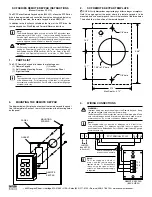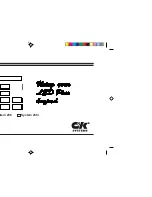
22
USER MANUAL - CM1000-ENG-09-22
7. TECHNICAL SPECIFICATIONS
Device measures:
Classic 50x 130x 8 mm
Mykey 50x 77 x 8 mm
Power source:
9 to 24 VDC (
12VDC Recommended
)
Power consumption on Idle: 14 mA at 12VDC
Inputs:
ExtGreen, ExtRed and ExtBuzzer [Active LOW (-/GND)]
Outputs:
Output1 and Output2, Open Collector [Active LOW (-/GND)]
Protection
rate:
IP67
Environmental conditions:
Temperature: -35°C to +66°C
Color:
White or Black.
6. REX INPUT
REX means
R
equest to
EX
it. In the CM1000, the REX input will produce Output2 activation
as a consequence of someone attempting to egress through a door.
REX is used for three primary reasons:
First, access control systems may control doors which are also being monitored for security
management, to indicate exception conditions on remote monitoring equipment.
Second, access control systems may utilize electrically actuated bolts, electromagnetic lock,
shear locks, or a combination of locking devices which do not provide an integral means
of manually unlocking the door to allow free egress. For the majority of applications, build-
ing and Fire Codes will mandate that any door along the path of egress (and most internal
doors) allow free egress at all times.
There are exceptions, but these exceptions generally apply to institutional applications (such
as detention facilities or psychiatric wards), government high security and special locking
arrangements (such as delayed egress). Suitability of an opening for anything other than
Free Egress will always be ultimately determined by the AHJ (Authority Having Jurisdiction).
There may be times when more than one AHJ may be involved, in which case conflicts
between them have been known to occur, as each may interpret the code differently. The
bottom line is that for those situations where the electric locking device does not have any
integral means of unlocking it for free egress, the REX input becomes a critical elements to
the system behavior.


































